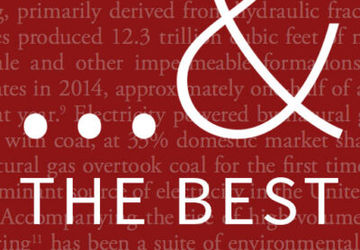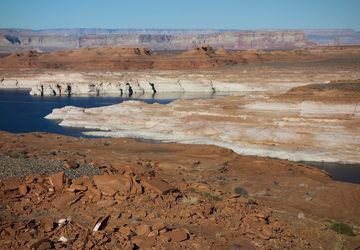By Shiriel Abramson '20
Hometown: Tiburon, CA
Major: American Studies
Summer Research Assistant, The Bill Lane Center for the American West
As my project wraps up, I would like to discuss a few key moments of significance in my tap piece.
First, the Shim Sham and its variations:
The Shim Sham is a classic tap dance that many trained tap dancers know. It is a marker of unity for the art form. To me, it is also a symbol of the iterative, improvisational, ever-changing nature of the development of tap dance because its origins are somewhat unknown, even though it is traditionally attributed to Leonard Reed. These ideas of (ex)change encapsulated by the Shim Sham, and by the form of tap dance more broadly, must animate our approach to addressing climate change.
The Shim Sham is also a grounding presence amid a piece of art that tries to push boundaries. I believe that any genre-questioning piece must also acknowledges its roots, especially in an art form whose cultural memory is limited to informal modes of knowledge transmission. Because tap has historically not been recognized with the same legitimacy as Ballet and Modern in academic institutions, intra-piece allusions are one powerful form of (embodied) knowledge transmission and recognition.
Finally, the Shim Sham, when danced by at least two people, offers ample possibility for the kind of playfulness that I wish were more present in cultural engagement with the natural world. Collaborating with Chloe allowed us to play with point and counterpoint in our dancing. The whimsicality of our duet models the co-creative approach that must drive any action to protect the planet.
Second, the “knee-in” “heel out” and the entrance sequence:
These moments in the dance are a nod to Michelle Dorrance, one of tap’s current champions of experimentalism. It was important to me to acknowledge Dorrance’s influence on my own style because her work has had a profound impact on making unconventional work (like my own) palatable to American audiences. The entrance sequence alludes to the choreography in ETM, or Electronic Tap Music, an ensemble piece that pushed boundaries by incorporating sound-sensitive wooden boards onstage. In ETM, a single dancer appears, carefully placing one foot after another, triggering deep reverberations of low sound in a tension-building display of wonder. While my own feet did not trigger the same grandeur of sonic experience, I wanted to parallel the drama of the entrance to channel the gravitas of our current cultural mood on the climate.
Third, the loosening of somber facial expressions into smiles:
The gradual ease of face into soft smiles was an embodied expression of sadness becoming hope. The acceleration of facial relaxation occurs during the leap-running steps, in which Chloe and I make circles of the stage and merge our rhythms in synchrony. The frantic run-scuffing represents the possibility that anxious energy can coexist with a joyful future: even as we try to center positivity in our emotional processes, we cannot block out our awareness of environmental degradation if we want to live in clear-eyed partnership with the earth. Furthermore, as a choreographer, I am not interested in guiding my audiences to delude themselves––we cannot deny that we are already feeling the negative effects of a warming climate. Rather, I want listener-viewers to be able to hold the complexity of destruction with the possibility of joyful uncertainty. The growing use of the term “eco-anxiety” reveals to me the increasing importance that cultural products acknowledge our fears without capitulating entirely to a catastrophic vision of the future.
Last, I want to comment on the outfit choice in the video. In order to remain consistent with the philosophy of my project, Chloe and I did not purchase anything for the filming process. We did not want to contribute to the overconsumption that is largely responsible for environmental degradation. The muted colors of our clothing were a reference to the muted colors of orchestral performers, who wish to draw attention to their instruments rather than the visuals of their bodies. As a tap dancer, I am acutely aware that rhythmic complexity is often missing from mainstream tap renderings that show tap as a flurry of fast footwork. Thus, I wanted to highlight the musicality of the feet, and especially its potential to speak expressively in sonic interlocution with the natural world.
It is with immense gratitude to the Bill Lane Center that I finish my research. The demands of this project tested my mind and my body, and my work also gave me an incredible opportunity to reflect on core assumptions about my role as an artist in combating climate change. I leave with renewed hope in the power of art to move, inspire, and provoke productive reflection on the unstable future of this awe-some planet.
Read more at the Out West Student Blog »



